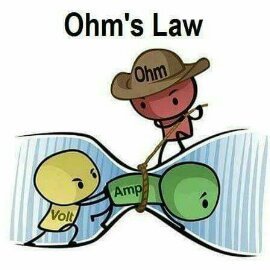An AI in Education Conversation
Tak Auyeung
AI in Education

What is AI (Artificial Intelligence)?
- Turing’s test
- Strong AI
- Weak AI
- Machine Learning
The term “AI”
- Is vaguely defined. It can have many meanings.
- Is a popular buzzword.
- Is often overused to describe technologies that are not exactly AI.
- Is (IMO) overhyped.
Turing’s test
- Can a computer pass as a human via remote (terminal) interaction?
- Being human \(\ne\) being intelligent!
Strong AI
- General intelligence.
- Not mission specific.
- Do what we (humans) can do.
Weak AI
- Mission-specific intelligence.
- Chess-bot, Roomba, route finding, etc.
- Our WayFinder was once
considered AI!
- It uses Dijkstra’s algorithm, it is now a 3-hour lecture topic.
- Our WayFinder was once
considered AI!
- Algorithm-based.
Machine learning
- A general form of modeling
- Artificial neural network
- Random forest
- etc.
Does AI depend on machine learning?
- Most weak AI technologies do not depend on machine learning.
- Generally, AI does not depend on machine learning.
- In a sense, machine learning is a way to imitate.
- Neural network is a machine learning mechanism.
- It is difficult to “extract” what a neural network has learned.
Machine learning and modeling
- A “model” in this context is an emulator.
- A model (in this context) does not need to know the “why”, just the “how”.
- Machine learning is an “automatic” way to create a model.
- Not exactly automatic because neural network machine learning is a black art!
- The general approach of using neural network is to throw resources at the problem.
What is GPT?
GPT
- Generative Pre-trained Transformer.
- Generative: not to recognize/classify, but to “output content.”
- Pre-trained: not learning on-the-fly.
- Transformer: a technology/technique to output content based on a prompt.
ChatGPT
- Text-based GPT
- Trained on all text material freely accessible on the Internet
- Complex neural-net approach
- Learns patterns, patterns of patterns, etc. (multilayer neural network)
- Has an “attention” mechanism to maintain context and focus of a conversation
- Has the ToM (theory of mind) of a 9-year-old human
More about Large Language Model (LLM)
- Learn by training.
- Patterns of what follows what.
- Ability to “abstract” and find patterns of patterns.
- Learns grammar on-the-fly based on presented examples.
- No intrinsic reasoning/logic capabilities.
- Good example of garbage-in-garbage-out if training samples are not selected or filtered.
Education
- What is education?
- Objectives
- How it is done
- The role of educators
The objectives of education
- From a student’s perspective:
- To acquire knowledge and skills.
- Skills include:
- Reading/writing,
- Critical thinking, and
- Problem-solving.
How education is done
- Classes:
- Content,
- Assessment,
- Instruction, and
- Interaction with an instructor.
The role of an educator
- This is Tak’s subjective opinion:
- To acquire, curate, and structure learning material.
- To present learning material.
- To interact and address questions from learners.
- To assess learning objectives.
Student Learning Outcomes
- What do students need to learn?
- Knowledge?
- Skills?
Slide rule vs. spreadsheets
- Is this comparison applicable?
- The effective use of ChatGPT relies on the prompt.
- The prompt seeds the “transformer” to generate output.
- AI tools are powerful, but there are skills required to use AI tools effectively.
Knowledge
- Even with search engines, knowledge by itself becomes less important as a learning objective.
- Few employers expect employees to be able to recall specific knowledge.
- Instead, employers value the application of knowledge to solve problems.
Skills for the post ChatGPT era
- A continually changing list of skills.
- “What AI cannot do, yet.”
Recalling knowledge.Analyze a scenario.Apply reasoning.- Critical thinking.
- Troubleshooting.
- (Ironically) pure logical thinking.
- (Also ironically) out-of-the-box thinking.
Critical thinking
- What is critical thinking?
- ChatGPT limitations
- Can only compare-and-contrast based on existing literature that compared-and-contrasted.
- Critical thinking is a form of out-of-the-box thinking: what if the
current theory is wrong?
- Is there evidence that the current theory may be wrong?
- What is a better theory to propose?
Troubleshooting
- What is troubleshooting?
- ChatGPT limitations
- Can only troubleshoot symptoms with known troubleshooting process.
- Human troubleshooting process is not entirely at a conscious level.
- ChatGPT is trained only based on written text, there is no data to model the subconscious processes.
Pure logical thinking
- ChatGPT is probabilistic, there is no intrinsic knowledge of logic.
Out-of-the-box thinking 1
- The ability to “borrow” concepts from an entirely different domain.
- Examples:
- The use of analogies, personification, etc.

Out-of-the-box thinking 2
- The ability to “question” assumptions. (Beyond critical thinking.)
- Examples:
- Einstein’s questioning of Newtonian physics, and the new assumption of the speed of light being constant, warp time and space, instead.
- Planck’s questioning of Newtonian physics, and the new assumption of the quantized nature of physics.
Open discussion
- How do we update our curricula?
- Courses not intended for transfer.
- Courses for transfer.
Using AI and cheating
What are we really testing?
- Does what we test match the learning outcomes?
- Do the learning outcomes match what employers expect?
What do employers expect (post ChatGPT) from human employees?
- The use of AI as a tool to:
- Improve efficiency,
- Improve accuracy (?),
- Solve problems (?).
What do we teach our students?
- Prohibit the use of AI tools:
- The students will not have the skills to properly leverage AI tools.
- Allow the use of AI tools:
- Then what are we teaching and assessing?
Employers expect efficiency
- Students should know how to use AI tools when they are applicable.
Employers also expect correctness
- Students should be able to evaluate AI-generated results.
- Students should still know the fundamental concepts and solve problems “by-hand”.